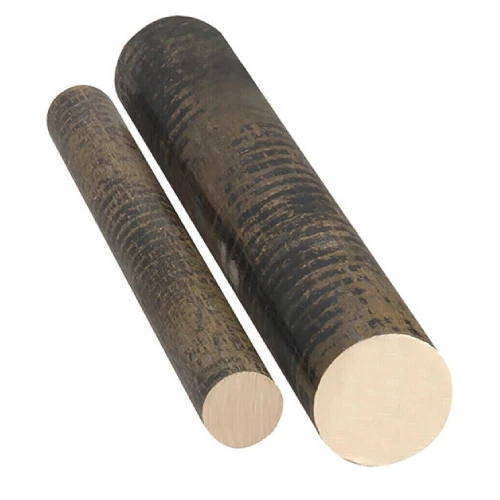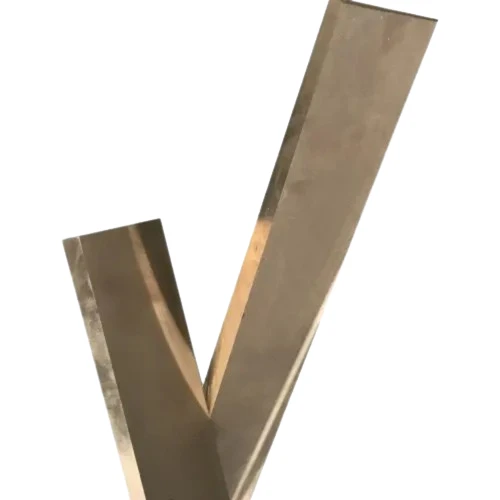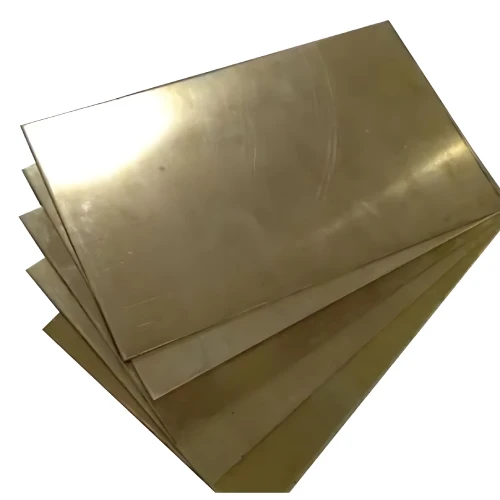C86300, commonly known as Manganese Bronze, is a copper alloy celebrated for its exceptional strength, wear
resistance, and durability under heavy-load conditions. This alloy is widely utilized in applications where
its mechanical properties and resistance to wear are crucial for longevity and performance.
Chemical Composition
C86300 is primarily composed of the following elements:
| Element |
Percentage (%) |
| Copper (Cu) |
60.0 - 66.0 |
| Zinc (Zn) |
22.0 - 28.0 |
| Iron (Fe) |
2.5 - 5.0 |
| Manganese (Mn) |
1.0 - 4.0 |
| Lead (Pb) |
≤ 0.20 |
| Tin (Sn) |
≤ 0.20 |
| Nickel (Ni) |
≤ 0.20 |
| Phosphorus (P) |
≤ 0.10 |
| Aluminum (Al) |
≤ 0.005 |
| Silicon (Si) |
≤ 0.005 |
Mechanical Properties
C86300 exhibits robust mechanical properties suitable for demanding applications:
| Property |
Value |
| Tensile Strength |
400 - 800 MPa |
| Yield Strength |
250 - 650 MPa |
| Elongation |
6 - 15% |
| Hardness (Rockwell B) |
75 - 95 |
| Electrical Conductivity |
13 - 16% IACS (International Annealed Copper Standard) |
| Density |
8.84 g/cm³ |
Corresponding Country's Brand
C86300 is recognized under different brands in various countries. Here are some equivalents:
| Country |
Brand Name |
| USA |
Manganese Bronze, C86300 |
| UK |
- |
| Germany |
CuZn22Al2Fe3Mn2 |
| Japan |
C8630 |
| China |
QSn6.5-0.1 |
Common Questions and Answers
1. What are the primary applications of C86300 in industry?
Answer: C86300 Manganese Bronze is commonly used in heavy-load applications such as gears,
bearings, and valve components where its excellent wear resistance, high strength, and durability are
required. It is also used in marine environments for propellers and pump components.
2. How does C86300 compare to C86200 (Manganese Bronze)?
Answer: C86300 Manganese Bronze contains higher iron content compared to C86200, which
contributes to its higher mechanical strength and wear resistance. It is specifically designed for
applications requiring superior strength under heavy loads, whereas C86200 offers better corrosion
resistance and is suitable for marine environments.
3. Is C86300 suitable for machining and welding?
Answer: Yes, C86300 can be machined using standard machining techniques suitable for bronze
alloys. Welding of C86300 is possible using methods such as gas tungsten arc welding (GTAW) and gas metal
arc welding (GMAW), although preheating and post-weld heat treatment may be required to minimize the risk of
cracking.
Summary Table
| Aspect |
Details |
| Chemical Composition |
Cu (60.0-66.0%), Zn (22.0-28.0%), Fe (2.5-5.0%), Mn (1.0-4.0%), Pb (≤ 0.20%), Sn (≤
0.20%), Ni (≤ 0.20%), P (≤ 0.10%), Al (≤ 0.005%), Si (≤ 0.005%)
|
| Mechanical Properties |
Tensile Strength: 400-800 MPa, Yield Strength: 250-650 MPa, Elongation: 6-15%, Hardness: 75-95
Rockwell B, Electrical Conductivity: 13-16% IACS, Density: 8.84 g/cm³
|
| Country Brands |
USA: Manganese Bronze, C86300, Germany: CuZn22Al2Fe3Mn2, Japan: C8630, China: QSn6.5-0.1 |
| Applications |
Gears, bearings, valve components, marine propellers, pump components |
C86300 Manganese Bronze is a robust copper alloy renowned for its exceptional mechanical properties and
durability, making it ideal for heavy-load applications where strength, wear resistance, and reliability are
critical.



